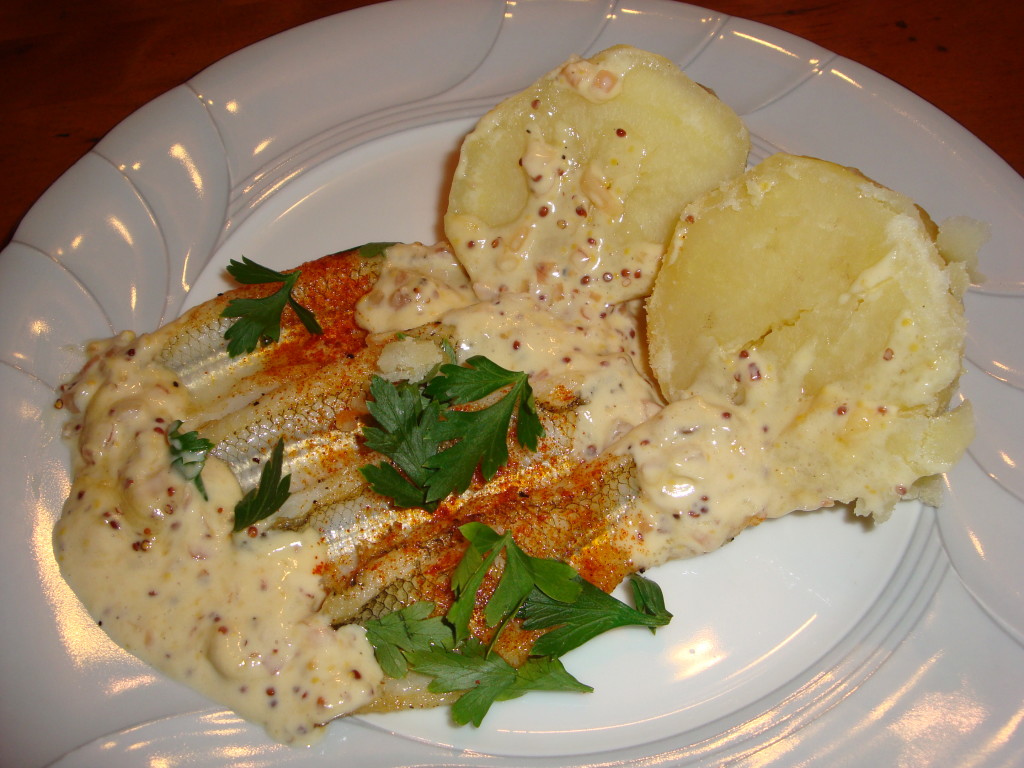On Sunday supplement
Food and Wine
I am regularly reminded by locals, expats and visitors that there simply is no good fish here in Argentina, except maybe in Patagonia. And just as regularly I find myself arguing to the contrary. While it is true that until a few years back there were no decent supply lines bringing in good quality fish to the capitol, that has all changed over the last decade. There are now excellent seafood shops scattered around the city, ranging from the inexpensive markets of Barrio Chino to exclusive suppliers dotting the streets of Palermo, Recoleta, Retiro and San Telmo, at the very least.
The next comment that follows up the argument is always something to the effect of “I don’t know what any of these fish are, I’ve never heard of them.” To me, that’s not a reason to not try them, it’s a reason to either look in a dictionary and find out what finned creature is laid out on ice in front of you, or, just take some home and give it a try. But, I understand the “need to know” imperative.
Let’s start with the pejerrey, or South American Silverside family, genus: Odontesthes, with several species, including platensis, bonariensis and others. The most common eating fish locally is probably the bonariensis, or Argentine Silverside. These are not generally big fish – tending to be about 15 to 25 cm long, and very thin. The meat is gleaming white, with a silvery sheen or stripe on the outside. They have a fairly delicate flavor, and unfortunately these days are usually served up battered and fried and therefore indistinguishable from any other fish, or smothered in salsa roquefort, a strikingly pungent blue cheese sauce that masks any possibility of knowing what lies beneath it.
One of my favorite recipes for this fish, one that gives plenty of flavor from the preparation but still leaves the delicacy of the fish to shine through, is a dish called Pejerrey a la Colonial. It is a dish that’s rarely seen on a menu anymore, but at one time was popular in Argentina – as best I can determine, somewhere around the late 50s and early 60s. It’s a shame that it has disappeared from local restaurants because it’s a delicious preparation that hits all the right notes – essentially napping the fillets of simply sauteed fish in a rich and tangy mustard cream and butter sauce. During hot summer months it can seem a bit heavy despite being a fish dish and so we’ve lightened it up a bit, changing out the oil and butter for good olive oil and bringing in yogurt to replace the heavy cream (this also works well with lowfat versions of local sour cream substitutes like Casa ‘n Crema or Mendicrem).
Pejerrey a la Colonial, Light
4 pejerreyes, approximately 20cm in length, cleaned and filleted (8 fillets)
2 medium onions, chopped
2 cloves garlic, thinly sliced
120 ml dry white wine
200 ml lowfat, unsweetened yogurt
35 gm Dijon mustard, preferably with seeds
3-4 stalks of parsley, leaves chopped
sweet paprika (pimentón dulce) to sprinkle over
3 tablespoons olive oil
salt and pepper
Lightly salt and pepper both sides of the cleaned fillets (if they’re not already prepared, remove the heads, tails, fins and bones to leave clean fillets) and saute them in a pan quickly over medium heat, two minutes on a side. Remove them and set them aside (if you can, maintain them warm, in a low heat oven). In the same pan, without changing the oil, cooked the sliced garlic and chopped onions until soft and translucent, about 5 minutes. Add the wine and bring to a simmer, letting most of the liquid be absorbed into the onion mixture. Add the yogurt and mustard, stir well to smooth out the sauce and adjust seasoning with salt and pepper to taste. Serve two fillets to each diner, spoon some of the sauce over each end of the fillets, leaving the center length uncovered, and then sprinkle the whole thing lightly with the paprika and chopped parsley. Delicious accompanied with boiled potatoes.
A series of recipes and articles that I started writing for the Buenos Aires Herald Sunday supplement, Food & Wine section, at the beginning of 2012. My original proposal to them was to take local favorite dishes and classics and lighten them up for modern day sensibilities. We’re not talking spa or diet recipes, but at the very least, making them healthier in content, particularly salt, fat and portion size. As time went by, that morphed into a recipe column that, while emphasizing food that is relatively “good for you”, wasn’t necessarily focused on local cuisine. At the beginning of 2013 I decided to stop writing for them over some administrative issues, but it was fun while it lasted.
